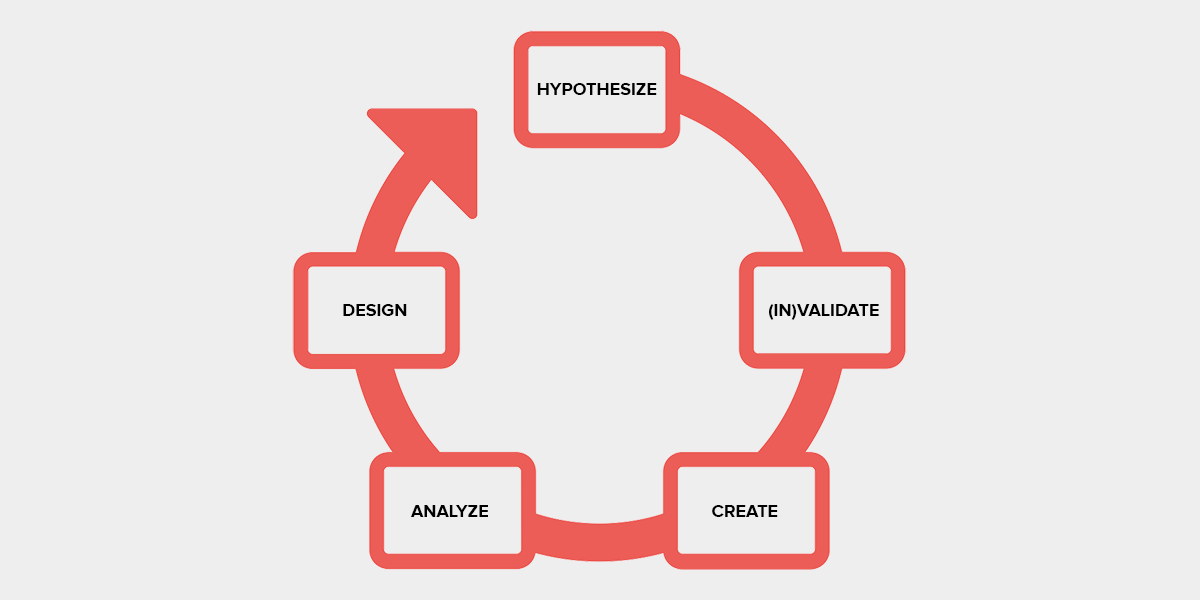Wondering how to map the experiences that your customers currently have with your organization? Follow these five steps.
1. HYPOTHESIZE about the experience you currently deliver
A hypothesis journey map is just what it sounds like: your hypothesis of what customers go through as they do business with you. Be careful with this step—it’s necessary, but can also be dangerous. That’s because your hypothesis map is likely full of incomplete or incorrect assumptions. (We once worked with a major bank that was about to invest a large sum in fixing a part of the journey their customers didn’t care much about, and more recently with a large grocery client that didn’t know about a top delighter in shopper’s store visits.) Not to fear! That’s where the next step comes in.
2. (IN)VALIDATE your hypotheses with customers
You can do this in multiple ways: diary studies, one-on-one interviews, observations of your customers at home or work, online communities, or just about any other type of ethnography you can think of. But one of the most effective—and fun!—ways to determine whether your assumptions were right or wrong is to invite your customers to a workshop. (When we run workshops, we typically include about 20 customers along with a slightly smaller number of our client’s employees.) The workshop setting allows for intimate conversations, storytelling, and a deep exploration of customers’ needs and pain points. Ultimately, you’ll wind up with a bunch of sticky notes that represent the aggregate experience of the customers in the room—and the spark for cultural change as your colleagues evangelize what they’ve heard.
3. CREATE maps that will generate empathy
Journey maps are diagrams that visualize the actions, thoughts, and feelings of a person or a group overtime. In other words, journey maps illustrate customers’ stories. If you need a leg up creating your own journey maps, download our FREE PowerPoint journey mapping template. But remember: A journey mapping initiative isn’t about the maps. It’s about changing the way your organization works so that you can improve the customer experience and your business metrics. That’s why the creation of maps is only Step 3 in our five-step process.
4. ANALYZE why customer pain points exist
Once you’ve determined what it is you want to fix, it’s natural to want to run off and start fixing it. Not so fast! Many customer pain points are the result of systemic problems within your organization—or your partners’ organizations. Fixing the surface problem without looking deeper at the people, processes, and technology that underpin it will only result in more customer pain points down the road. Simple techniques, such as the 5 Whys, can help you identify the root causes of problems in the customer journey.
5. DESIGN solutions that will improve your business
Even once you’ve identified the right problem to solve, it’s a common knee-jerk reaction to solve that problem with the first solution you think of. But let’s be honest: our first solutions aren’t always our best. Designing your solutions in a customer-centered manner involves three basic steps: coming up with as many possible solutions as you possibly can, prototyping those that seem most viable, and then testing those prototypes with customers (and/or employees and/or partners). Iterating on this process several times will mitigate the risk of implementing the wrong solution to the right problem.
***
Longtime followers of our blog may remember a similar post, 10 Steps To Mapping Your Current Customer Journey, from October 2016. We haven’t changed our tune. All of those 10 steps are still valid and important—and, in fact, are folded into the five steps above. But over time, we’ve found the need to simplify our model to make it easier for people to remember. Any questions? Give us a jingle. And in the meantime, Happy Mapping!




